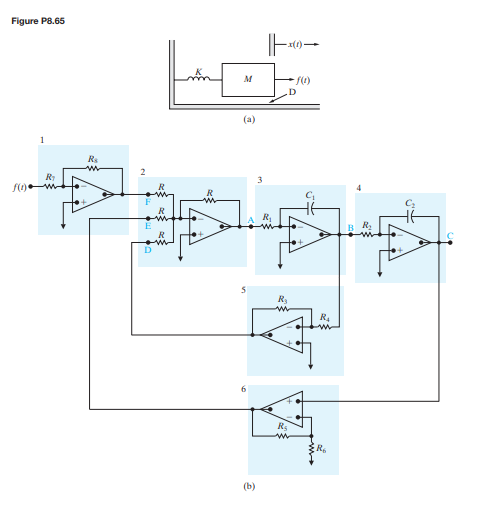solution
solution.
We now wish to illustrate how several op amp circuits can be interconnected to solve a differential equation.
Ă‚Â a) Derive the differential equation for the springmass system shown in Fig. P8.65(a). Assume that the force exerted by the spring is directly proportional to the spring displacement, that the mass is constant, and that the frictional force is directly proportional to the velocity of the moving mass.
Save your time - order a paper!
Get your paper written from scratch within the tight deadline. Our service is a reliable solution to all your troubles. Place an order on any task and we will take care of it. You won’t have to worry about the quality and deadlines
Order Paper Now b) Rewrite the differential equation derived in (a) so that the highest order derivative is expressed as a function of all the other terms in the equation. Now assume that a voltage equal to d2 x>dt2 is available and by successive integrations generates dx>dt and x. We can synthesize the coefficients in the equations by scaling amplifiers, and we use a summing amplifier to combine the terms required to generate d2 x/dt2 . With these ideas in mind, analyze the interconnection shown in Fig. P8.65(b). In particular, describe the purpose of each shaded area in the circuit and describe the signal at the points labeled B, C, D, E, and F, assuming the signal at A represents d2 x/dt2 . Also discuss the parameters R; R1, C1; R2, C2; R3, R4; R5, R6; and R7, R8 in terms of the coefficients in the differential equation.

"Looking for a Similar Assignment? Get Expert Help at an Amazing Discount!"

